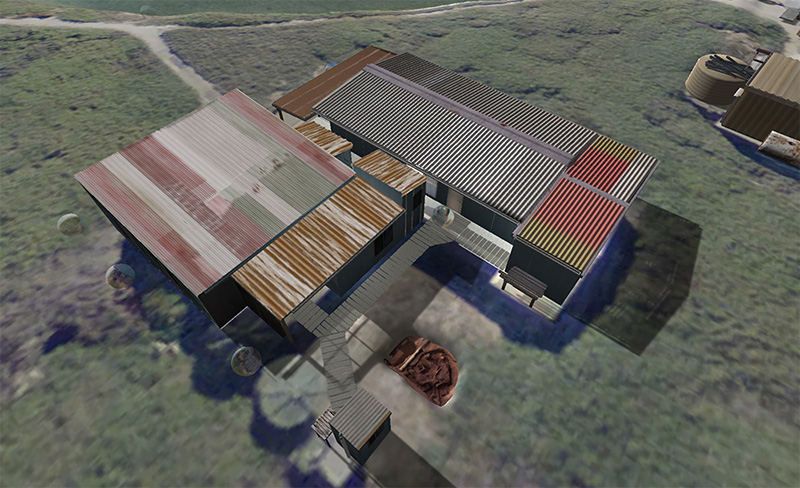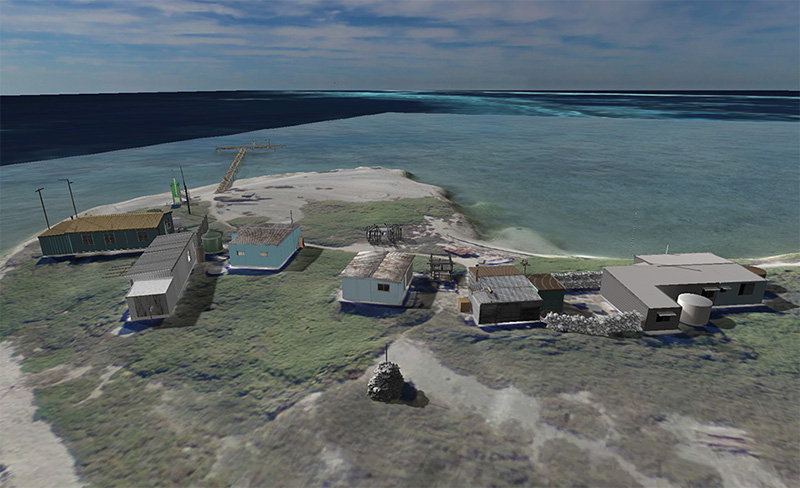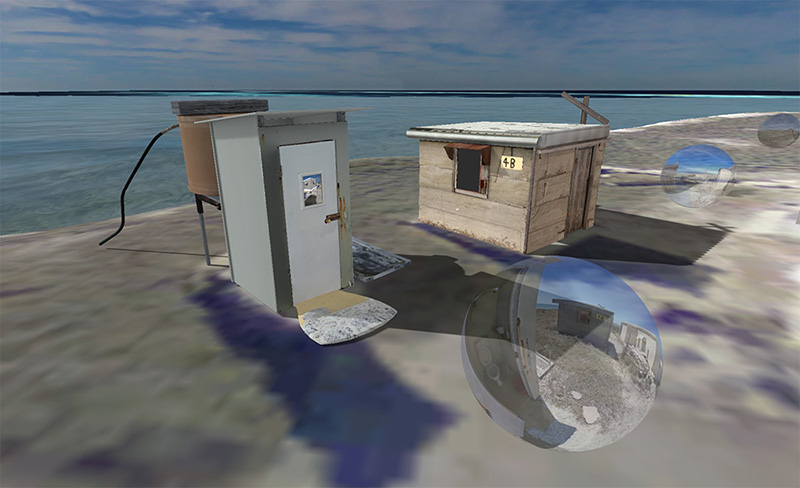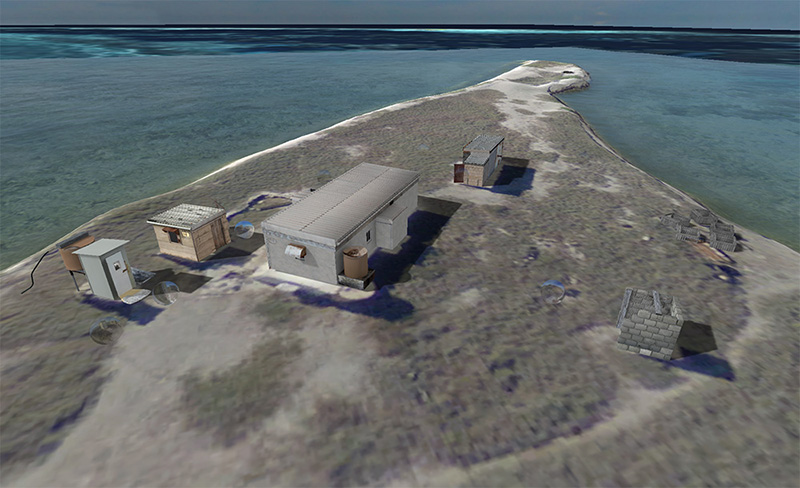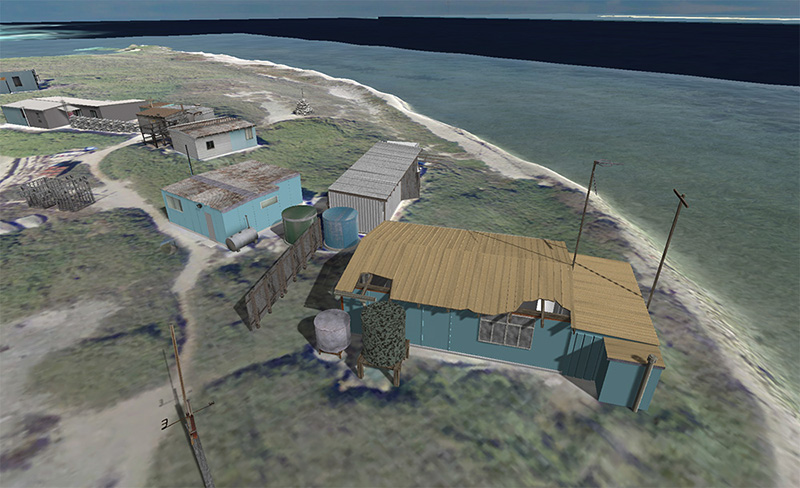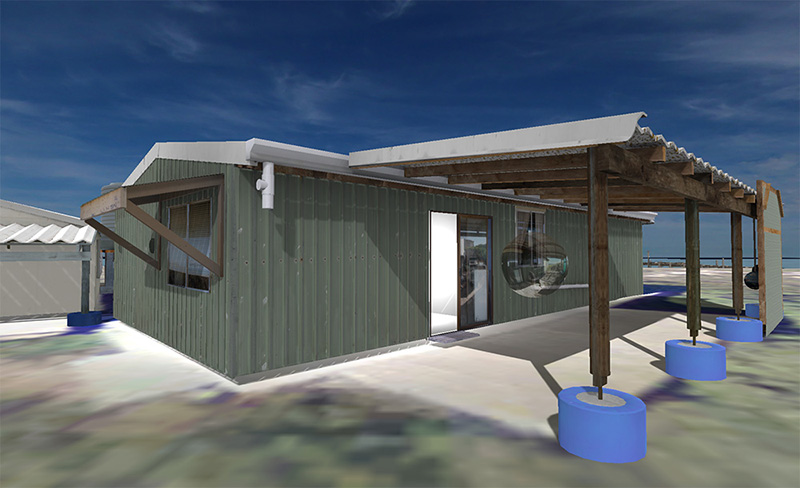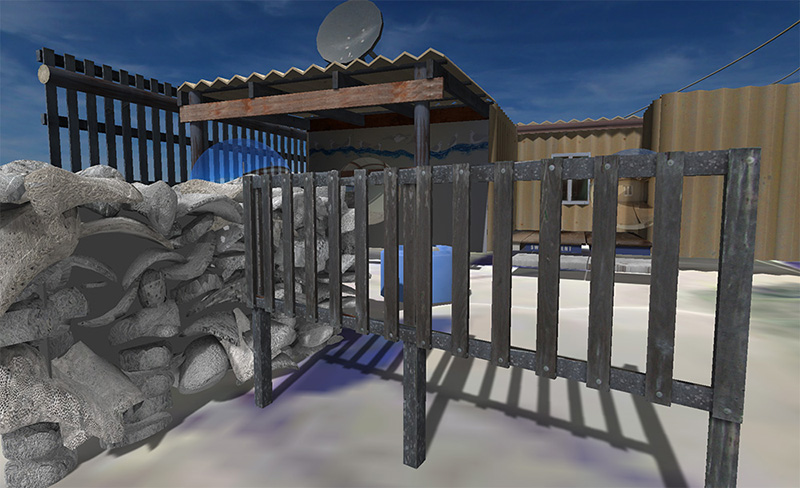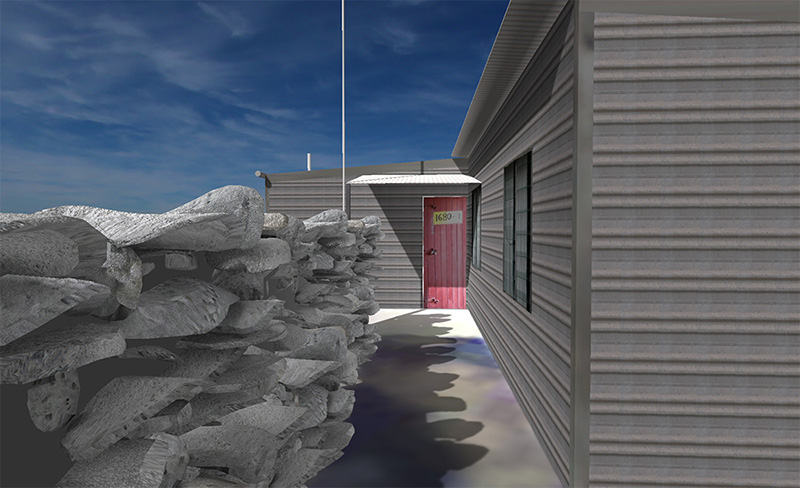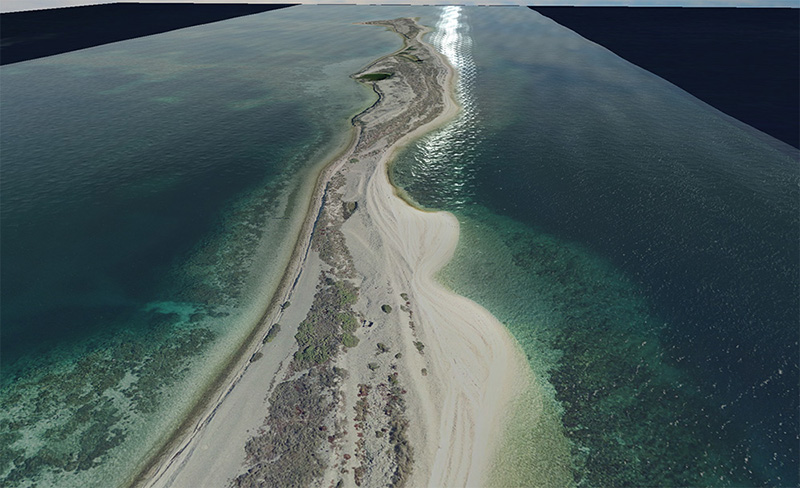Beacon virtual environmentOriginal Unity design and implementation by Paul BourkeBuilding models and other asset contributions by Aaron Cross. Further Unity development and final builds by Nick Oliver. Funding from iVEC@UWA and ARC Linkage "Shipwrecks of the Roaring Forties: A Maritime Archaeological Reassessment of Some of Australia's Earliest Shipwrecks" February 2015
The following documents a virtual environment built around Beacon Island circa 2013 before the remaining fisherman huts were removed. The environment is built on the Unity3D game engine and is available for Mac and Windows. It has also been customised for other VR environments such as the Oculus Rift, a large 18MPixel stereoscopic display and on the iDome. It is based upon dimensioned building floor plans, survey data of the topology, photographic orthotextures from the island, spherical panorama bubbles from hundreds of sites around the island and from the interior of every building, actual audio recordings from the island and photogrammetrically derived models. In short, every attempt has been made to include actual assets from the Island.
Quote: Jeremy Green
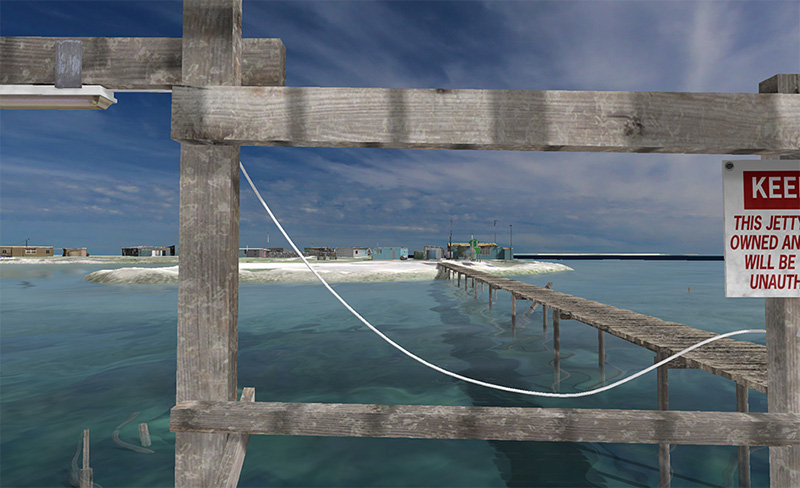 The main jetty is the landing spot for exploration of the Island.
See also
|
